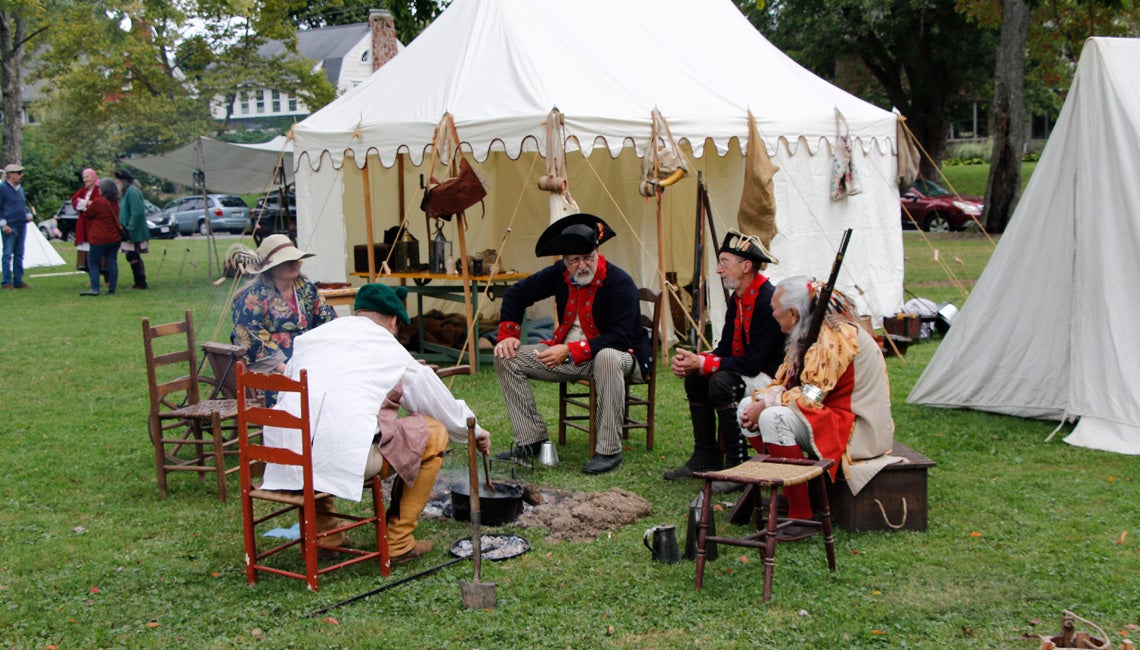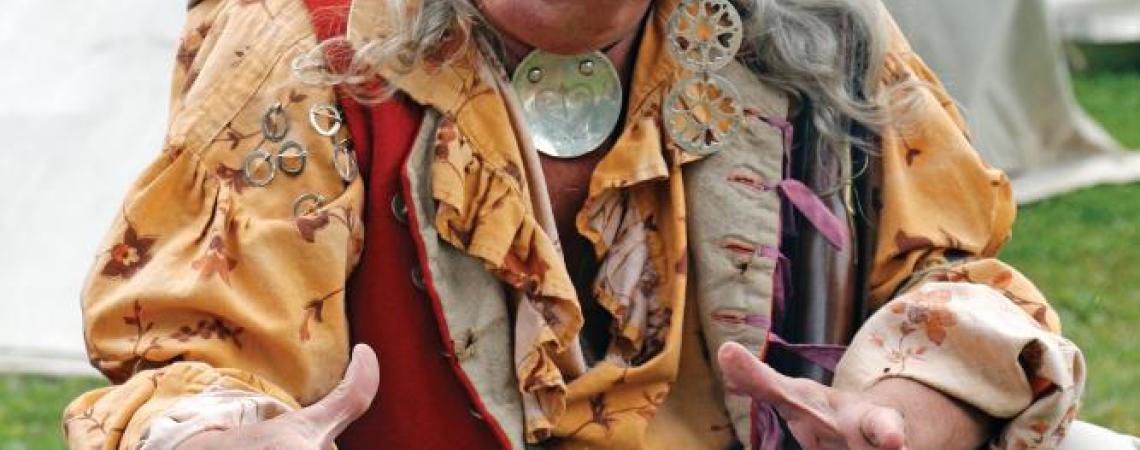Sitting beside a small campfire, its woodsmoke scenting the cool air of a perfect autumn afternoon, I could almost see the scene as vividly as the man seated across from me described it.
“The forest was vast,” he began, gesturing with a sweep of his hand, “stretching from Lake Erie all the way to the Ohio River. Many trees measured 5 to 6 feet through at their base — some even larger — towering skyward 150 feet or more. The only paths through the wilderness were game trails; the only roads were the rivers and streams that my people traveled by elm-bark canoe.”
The man across from me, Roger Moore of Mansfield, says he is “more than 70 winters old.” His shoulder-length gray hair was held behind his head on this day by a hair roach of turkey feathers. A large, round silver earring dangled from each ear, and a silver medallion hung from his neck. He wore a colorful trade-cloth shirt, leggings, and, of course, moccasins. His flintlock muzzle-loading rifle sat nestled in the crook of his arm.
Roger Moore's features are so characteristic of the Eastern Woodlands culture of North American Indians that artists and filmmakers have long sought him out to pose for paintings or appear in documentaries.
The “my people” he speaks of — and traces his lineage to through one of his grandfathers, a full-blooded Native American — were a mixed-race group (modern-day anthropologists term it a “tri-racial isolate”) known as the Carmel Indians. They lived in Ohio’s Highland and Meigs counties until as recently as the early 1900s.
Moore inherited his striking facial features from his grandfather. They are so characteristic of the Eastern Woodlands culture of North American Indians that artists and filmmakers have long sought him out to pose for paintings or appear in documentaries. They also add a certain authenticity to his work as an Indian reenactor, during which he offers those vivid descriptions of the Ohio country of a century or more prior to statehood in 1803.
“About 30 years ago, I was contacted by the artist Robert Griffing, who lives in western Pennsylvania,” Moore says. “He paints pictures of early Eastern Woodlands Indians, and his original oils sell for tens of thousands of dollars. He asked if I would come to his studio and model for him. We eventually ended up at the Smithsonian’s Heinz History Center in Pittsburgh, where he had me dress in all types of authentic Indian garb while he took hundreds of photos that he later referenced while creating his paintings. I’ve since been featured in dozens of Robert Griffing’s works.”
What Moore is too modest to mention is that his image graces the cover of Robert Griffing’s first book, published in 2000, The Art of Robert Griffing: His Journey into the Eastern Frontier. Two other books in the series have since followed: The Native Art of Robert Griffing: The Journey Continues (2007) and The Historical Art of Robert Griffing: An Amazing Journey (2018). If you’re a fan of American Indian history — as I am — any of those three volumes will overwhelm you with its detail and historical accuracy about early Native Ohioans.
“It was my association with Robert Griffing that really opened the door for me as an Indian reenactor,” Moore says. “Because of the popularity of his artwork, I began hearing from national filmmakers.”
He portrayed Chief Hendrick of the Mohawk in a four-part PBS miniseries, The War That Made America, about the French and Indian War, and has appeared in half a dozen or so documentaries produced by the History Channel and A&E, as well as other similar productions.
Those years as a reenactor, he says, have given him some insight into the people he portrays. At the conclusion of our campfire chat, he offered a point of view not often recognized about those early Native Americans who lived in the Ohio country:
“Historically, Indians have been depicted as a people to be feared. And during times of war with the whites or enemy tribes, that was certainly true; they were fierce frontier fighters,” he says. “But they were protecting their way of life, their families, villages, and land. Like you and me today — Indian or white — we would have done no different.”
W.H. "Chip" Gross is Ohio Cooperative Living's outdoors editor. Email him with your outdoors questions at whchipgross.gmail.com. Be sure to include "Ask Chip" in the subject of the email. Your question may be answered on our website!











